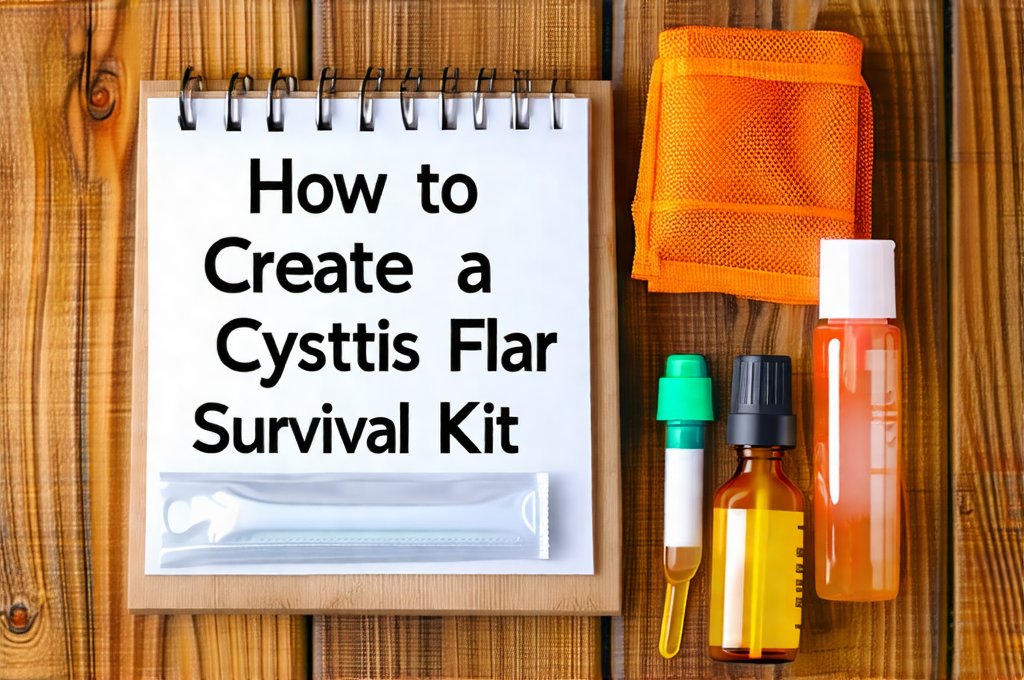Cystitis flares are notoriously disruptive, capable of turning even the simplest day into an exercise in endurance. Beyond the immediate physical discomfort – the burning sensation, frequent urge to urinate, and sometimes even blood in the urine – there’s a mental and emotional toll that many underestimate. It’s not just about pain; it’s about the anxiety of being far from a bathroom, the disruption to work or social plans, and the feeling of losing control over your own body. Many women (and some men) who experience recurrent cystitis develop a sense of dread around flares, constantly anticipating the next one. This anticipation can be almost as debilitating as the flare itself. Therefore, being prepared isn’t merely about having physical supplies; it’s about reclaiming a sense of agency and control in the face of an unpredictable condition.
Creating a “Cystitis Flare Survival Kit” is more than just assembling items – it’s building a personalized toolkit for managing symptoms and coping with the emotional impact of a flare-up. It’s a proactive step towards self-care, designed to provide comfort and reassurance when you need them most. This isn’t about curing cystitis (that requires medical intervention); it’s about mitigating the immediate distress and maintaining some semblance of normalcy during those difficult times. A well-thought-out kit should address both the physical symptoms and the emotional challenges associated with a flare, offering practical solutions and a sense of calm when things feel overwhelming.
Assembling Your Physical Arsenal
The core of any Cystitis Flare Survival Kit centers around managing the physical discomfort. This doesn’t necessarily mean medication (although that may be part of your doctor’s prescribed treatment plan); it’s about providing immediate relief while you wait for medications to take effect, or as supportive care alongside them. Hydration is paramount during a flare, so including readily available water bottles and electrolyte solutions is crucial. Think beyond plain water – herbal teas (caffeine-free, of course!) like chamomile or ginger can be soothing. A heating pad or hot water bottle provides comfort to the lower abdomen, easing cramping and reducing discomfort. Consider a portable, rechargeable hand warmer for extra warmth if you tend to feel cold during flares.
Beyond hydration and heat, think about practicalities. Include travel-sized tissues (unscented!), wet wipes (again, unscented), and potentially spare underwear in case of accidents. A small supply of pain relief – over-the-counter options like paracetamol or ibuprofen (if you can tolerate them and your doctor approves) – can help manage discomfort. Importantly, don’t self-medicate with antibiotics; always follow your healthcare provider’s instructions. Finally, a list of important phone numbers – your doctor, emergency services, and a trusted friend or family member – is an invaluable addition. This ensures you have quick access to support when you need it most. If you are recovering from a flare, consider how to care for your bladder during the recovery process.
Emotional First Aid: Calming the Anxiety
Cystitis flares often trigger significant anxiety and stress. The fear of being caught short, the disruption to daily life, and the sheer discomfort can be emotionally draining. Your survival kit shouldn’t just address physical symptoms; it should also include tools for emotional regulation. This might involve a small journal and pen for processing feelings, a guided meditation app on your phone (or pre-downloaded meditations), or even calming aromatherapy oils (lavender is a popular choice). A comforting playlist of music can provide a much-needed distraction.
It’s also vital to acknowledge the psychological impact of recurrent cystitis. Consider including affirmations or positive self-talk prompts in your kit. Something as simple as “This is temporary, and I am strong enough to cope” can be surprisingly effective. A small, familiar comfort item – a favorite photo, a lucky charm, or a soft toy – can offer a sense of security during stressful times. Remember that seeking emotional support from friends, family, or a therapist is also part of your “emotional first aid” strategy and shouldn’t be overlooked. Learning how to create a safe zone can help you cope with the anxiety that flares bring.
Managing Flare-Ups Away From Home
Being caught in the grip of a flare when you’re away from home can amplify anxiety significantly. Pre-planning for these situations is essential. Always carry a small, dedicated pouch with the essentials – pain relief, tissues, wet wipes, and a water bottle. Scope out bathroom locations wherever you go, mentally mapping out potential escape routes if needed (this sounds extreme, but it can be incredibly reassuring!).
If traveling, pack your full survival kit in your luggage. Consider informing colleagues or friends about your condition so they understand if you need to unexpectedly leave a meeting or event. Don’t hesitate to ask for accommodations – many public spaces are happy to provide assistance if you explain your situation. Preparing a short explanation of your needs can also be helpful, saving you from having to repeatedly describe your symptoms when asking for help.
Building Your Personalized Kit: Beyond the Basics
A truly effective survival kit is tailored to your specific needs and preferences. What works for one person may not work for another. Experiment with different items to find what provides the most comfort and relief for you. This might involve trying different types of heating pads, exploring various aromatherapy scents, or discovering which guided meditations resonate best with you.
Don’t be afraid to incorporate unconventional items that bring you joy or relaxation. A small coloring book and pencils can offer a creative distraction, while a favorite book or magazine can provide a mental escape. Consider adding a list of self-care activities you enjoy – taking a warm bath, reading a good book, listening to music – as a reminder to prioritize your well-being even during challenging times. The goal is to create a kit that feels like a comforting embrace, offering both practical support and emotional reassurance. If you’re looking for more ways to cope, consider how to create a recovery zone at home.
Regular Kit Maintenance & Review
A Cystitis Flare Survival Kit isn’t a “set it and forget it” kind of thing. Regularly reviewing its contents ensures it remains relevant and useful. Check expiration dates on medications and pain relievers, replenish supplies as needed (tissues, wet wipes, etc.), and assess whether any items are no longer serving you well.
As your needs change – perhaps after a consultation with your doctor or through personal experience – adapt the kit accordingly. Add new items that might be helpful, remove those that aren’t, and refine its contents to reflect your evolving self-care strategy. The act of maintaining your kit is itself a form of self-care, reinforcing your commitment to managing your condition proactively. It’s a tangible reminder that you are in control, even when cystitis flares try to take over.





















